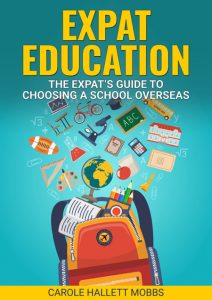Why should parents choose an international school?
Once every year at my school, on each of the three campuses, an international evening takes place. Parents bring dishes traditionally associated with their country of origin, for guests to sample. This year, a stall run by a Ukrainian couple was, by chance, set up alongside one offering guests beef stroganov, knish and shashlik – managed by two Russians.
If anyone had been expecting a major international confrontation over the borshch and deruny they may have been surprised: there was animated conversation between the two parties for sure, but – judging from the good cheer and exchanges of dishes – a friendship appeared to be being forged.
Harmony with diversity
Such is life in an international school. To continue the analogy, such schools are melting pots that some might expect to boil over as the social, cultural and political ingredients react to cause bitterness and division. But what is striking about these schools is how harmony sits so easily and comfortably alongside diversity, for the benefit of everyone in the community.
Of course, it would be foolish to deny that there is never any tension between students from, in our case, 76 countries from all over the world (with no one nationality dominant) and forging a school identity, which stands for a common and agreed set of values. But, of course, the two are not irreconcilable, and indeed can be mutually beneficial.
International evenings; attendance of Model United Nations conferences; trips to Tanzania to take part in service projects; the display of the students’ national flags in the school canteen; academic curriculum projects on global sustainability and international human rights; these are all features of international schools for which the International Baccalaureate provides the ties that bind such institutions together.
For the IB is not just a school curriculum offering qualifications. It is a 3 – 18 programme of learning, underpinned by a philosophy of education, which permeates every day life in schools that offer it.
Contained in that philosophy is the promotion of academic rigour, a concept often associated only with the 11 – 18 age range. But the IB Primary Years Programme, which students start to study as young as three, provides the foundation on which the Middle Years (11 – 16) and the Diploma programmes (16 -18) are built. Whilst it is not necessary to start studying the IB at this early stage, research suggests that it is more likely, all other things being equal, that such students will eventually secure a high IB Diploma score, to which entry to top universities around the world is a condition.
But the IB is also so much more than points scores and results. It is as much about ‘process’ as ‘outcome’, as its mission statement confirms:
The International Baccalaureate aims to develop inquiring, knowledgeable and caring young people who help to create a better and more peaceful world through intercultural understanding and respect……(Its) programmes encourage students across the world to become active, compassionate and lifelong learners who understand that other people, with their differences, can also be right.
There is no necessary conflict between the practice of this uniform set of values and the existence of a diverse community, as the example of our Russian and Ukrainian friends illustrates. May the guardians of our international order take note.
The 21st century is already providing the globe’s occupants with some extraordinary challenges. International schools provide a model, and their students with the necessary qualifications and values, to meet those challenges. And they are fascinating environments in which to study and work.
By Graham Lacey
My book on choosing the right school for YOUR child overseas
Choosing the right school for your child is one of the hardest decisions you’ll make as an expat parent when moving abroad. There are many education options around for expats, and so much depends on your individual family set-up and child that there is no ‘one-school-fits-all’ solution.
Each child is different and each country’s school system is different, even within the ‘generic’ international schools. Also, families differ in their requirements and aspirations, and even relocations vary greatly. What worked well for you all in one country won’t necessarily be replicated in your next move.
It’s easy to get very stressed at this point. Don’t panic! I’ve put together this book to help you kick-start your search for the best type of school for your child.
Available on your local Amazon
To get instant access to the key points you need to know right now, check out my abridged version eBook here




I love your articles, ExpatChild! I was really looking for an International School for my children and It happened that I found your article. Your suggestions are really helpful for parents like me. I saw an International School in Antipolo City, Rizal, Philippines which is very affordable. After reading your article, it helped me to checked their website and look for all the details and consider them as an option. Anyway, thanks again!
I love your articles and am a huge fan of ExpatChild. Being one, and having grown up in International Schools, I enjoyed reading this article in particular. Thank you!
Your featured (and only) photo showing two white girls. Given the overall subject that International Schools represent many nationalities, races and colors of skin, I would have loved to have seen a photo depicting that idea. The Int’l school I went to had kids from 96 different countries! Though your article introduces a Ukrainian girl and a Russian girl making friends, maybe an additional photo later in the article could have shown the true race diversity found in most International Schools!
Thank you for your comments, Alison. I’m glad you enjoyed the article.
Regarding the photo, whilst I agree it would have been good to have a) more nationalities depicted and b) more photos, the standard of the site is generally one photo per article. As for showing a more diverse range of pupils, yes, that would be nice. However, the author was kind enough to send that photo to accompany the article and I can’t afford to buy stock photos very often.
If I find a more suitable one at some point I may consider changing it 🙂